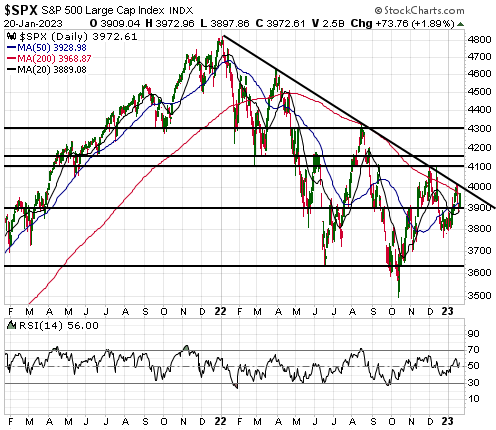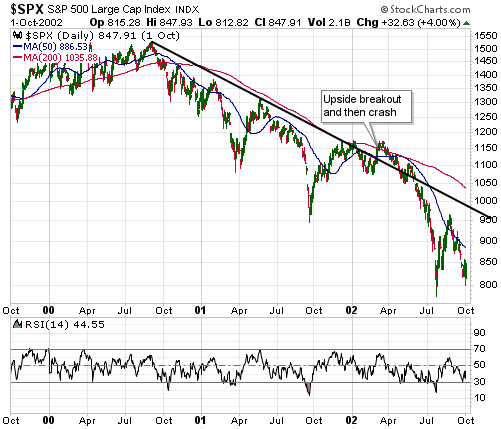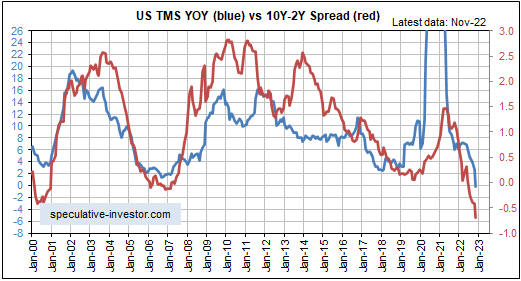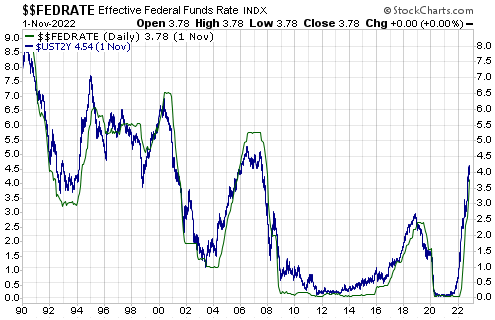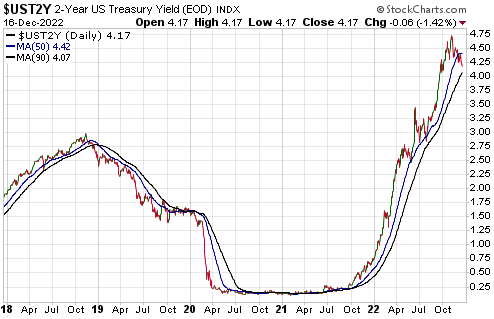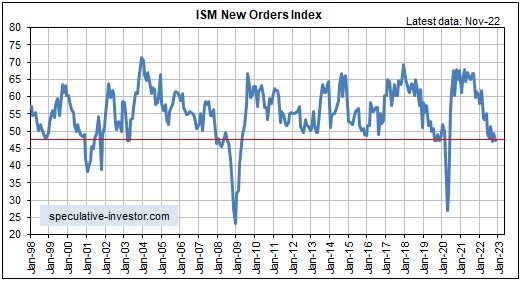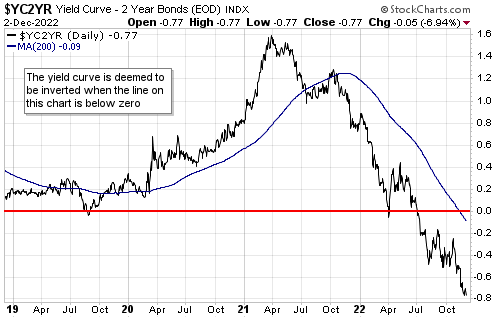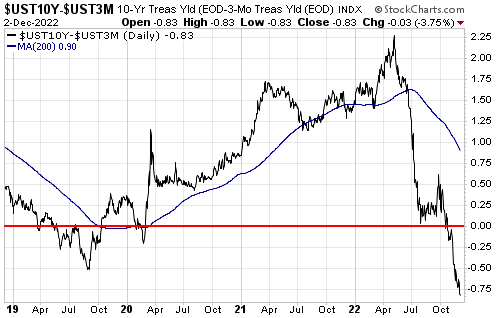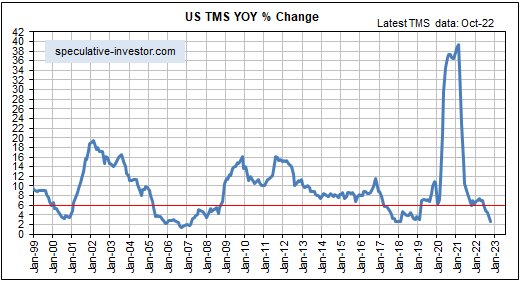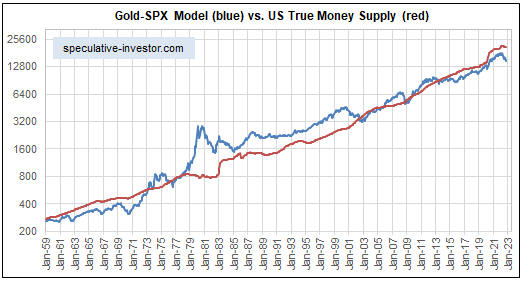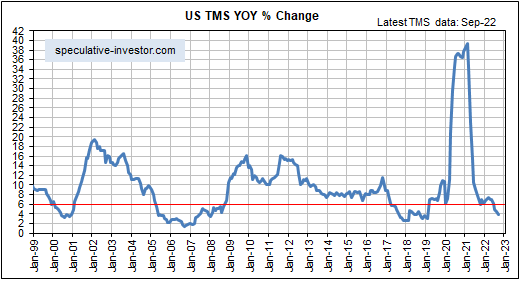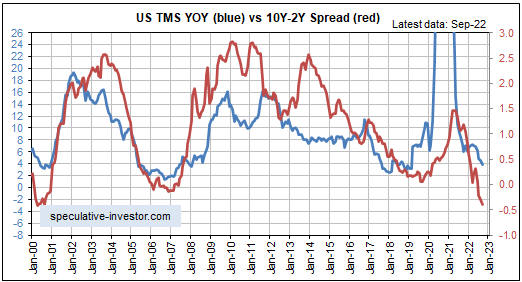[Below is an excerpt from a commentary posted at TSI on 19th February. Subsequently there have been no significant changes in the data, so the conclusion remains the same.]
Cutting to the chase, the short answer to the above question is no. Here is the longer answer:
Banks becoming suspicious of each other is one of the early signs that a banking crisis is brewing. This suspicion is indicated by a rise in the average interest rate that banks charge each other for short-term financing relative to the interest rate paid by the US federal government for financing of similar duration. For example, under normal (non-crisis) conditions the spread between 3-month LIBOR, a widely used interbank interest rate, and the yield on a 3-month Treasury Bill oscillates between 0% and 0.50%, but when some banks start becoming concerned about the financial strength of other banks the spread breaks above 0.50%.
The following daily chart shows the performance of the aforementioned interest rate spread since early-2006. The Global Financial Crisis of 2007-2009 sticks out on this chart and was signalled by an initial surge above 0.50% during the second quarter of 2007. During the period covered by this chart the only other move to well above the top of the normal range occurred during the March-2020 COVID crash, but it was very short-lived as the Fed acted immediately to ensure that the economic shutdowns perpetrated by governments did not create problems for the commercial banks. Also worth noting is that there were minor signs of banking-system stress in Q4-2011, Q3-2016, Q1-2018 and the first half of 2022 that did not develop into crises.
Importantly, the chart shows that the current spread is close to zero, which means that the interbank market is as calm (lacking in suspicion) as it ever gets.
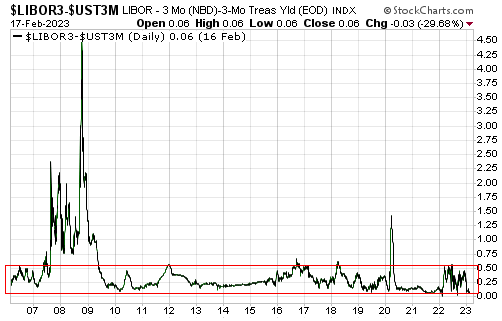
Another interest rate spread worth monitoring is the Secured Overnight Financing Rate (SOFR) minus the yield on the 1-month Treasury Bill. The SOFR is the interest rate that banks and hedge funds pay to borrow overnight money in the US Repo (Repurchase Agreement) market. It has a much shorter history than the LIBOR, but it is gaining in popularity. Like the LIBOR-Treasury spread discussed above, a substantial and sustained rise in the SOFR-Treasury spread would indicate increasing suspicion/stress in the banking system.
The following chart shows that the SOFR-Treasury spread has been far more volatile during the past 12 months than it was during the bulk of 2020-2021, but that it has oscillated around zero and currently is slightly below zero (a level indicating a general lack of concern).
Note that the huge upward spike in the SOFR-Treasury spread in 2019 was due to the “Repo Crisis” in September of that year. The Fed circumvented this crisis very quickly via emergency liquidity injections.
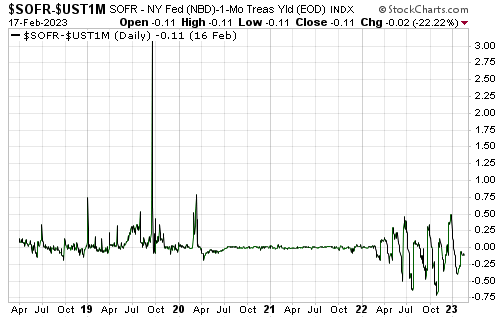
Unusual increases in the above interest rate spreads would warn that a banking crisis was brewing. Also, prior to a banking crisis there would be persistent and pronounced weakness in bank equities relative to the broad stock market.
The lower section of the following chart shows that there was significant weakness in the Bank Index (BKX) relative to the broad stock market (represented by the SPX) during February-March of last year, but that the BKX/SPX ratio is in a short-term upward trend and is at roughly the same level today as it was in early-April of last year.
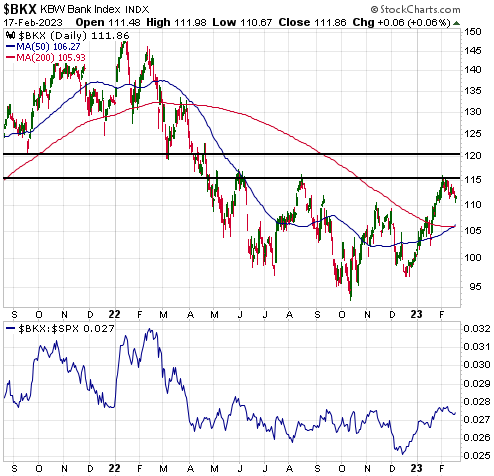
Banking crises don’t come out of nowhere. Enough people inside and outside the banking industry see them coming and take steps to protect themselves or profit from the fallout that early warning signs emerge. Currently there are no such signs.
 Print This Post
Print This Post

